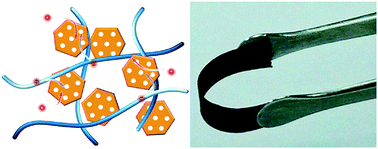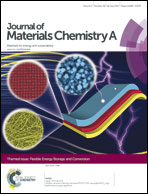Flexible all-carbon interlinked nanoarchitectures as cathode scaffolds for high-rate lithium–sulfur batteries†
Abstract
With the development of flexible electronics, great attention has been drawn by flexible batteries as a promising power source in the emerging field of flexible and wearable electronic devices. Considering the limitation of lithium ion batteries in energy density, lithium–sulfur batteries hold the promise to be the next generation of high energy density battery systems. Despite the great efforts devoted to exploring the cathode building block units based on nanocarbon materials, the rational design of the flexible cathode scaffold is still a challenge. Herein, we demonstrated the rational design of a sulfur cathode based on interlinked all-carbon scaffolds. Long carbon nanotubes (CNTs) were employed to form highly efficient conductive networks and MgO-templated carbon nanocages were used as building blocks for sulfur accommodation. The graphene-based carbon nanocages were directly generated and welded in the CNT networks. Electrochemical evaluation indicates that the rationally-designed structure endows the sulfur cathode with a high specific capacity and rate performance. The initial discharge capacity of the electrode reaches up to 1354 mAh g−1 at 0.34 A g−1. Even at a current density of 8.35 A g−1, a reversible capacity of 750 mAh g−1 can still be preserved, which is 70% of that at 0.84 A g−1. Such a versatile method for the construction of electrode scaffolds shows potential for flexible electrodes in high performance lithium ion batteries and supercapacitors.

- This article is part of the themed collection: Flexible energy storage and conversion

 Please wait while we load your content...
Please wait while we load your content...